Lighting is the soul of a space. It transcends simple illumination to profoundly shape its atmosphere, mood, and practicality. When light falls optimally, a space becomes less cold and more inviting, breathing and warming. Master the core principles of lighting design and choose the best fixtures, and you'll be able to create a poetic light and shadow in every corner of your home.

I. The Golden Triangle of Lighting Design
Perfect interior lighting, like sophisticated stage lighting design, follows a three-tiered approach: foundation, accent, and decorative. None of these elements can be neglected.
l Ambient Light: The Gentle Undertone of a Space
l Role: Like a soft, even "base makeup" applied to a room, it provides a uniform, non-overpowering base brightness, avoiding harsh contrasts between light and dark. The key is to "see the light, not the lamp," creating a sense of openness and transparency.
l Brightness Control: The key is to avoid excessive brightness. Excessive brightness not only wastes energy but also creates glare, disrupting the warm atmosphere and causing visual fatigue. Best Lighting Options:
l Ceiling Lights: Simple and efficient, suitable for spaces with limited ceiling height (floor to ceiling < 2.5 meters), such as bedrooms, study rooms, and small living rooms.
l Recessed Downlights/Light Strips: Providing soft, even light, they blend seamlessly into suspended ceilings and are the core of modern, non-dominant lighting designs. Light strips are particularly effective at defining the contours of a space, creating a sense of suspension and extension.
l Simple Chandeliers: Suitable for living or dining rooms with high ceilings (> 2.8 meters), offering both basic lighting and decorative effects.
2. Circular Lights: Illuminating Key Areas of Life
l Role: Like spotlights on stage, they are precisely projected onto specific functional areas or objects, compensating for insufficient ambient light and meeting specific activity needs (reading, cooking, working, displaying).
l Precise Positioning: "Add light where it's lacking." This requires a deep understanding of your family's living habits—where do you often read? Which corner of the kitchen counter is underlit? Do the treasures in the display cabinet need to be illuminated? Flexibility is key: Choosing lamps with adjustable direction, height, or bulb replacement options is crucial. If needs change or the effect isn't ideal, simple adjustments or bulb replacements (such as changing brightness or color temperature) can solve the problem without major changes.
Best Lighting Options:
l Adjustable Spotlights/Track Lights: Offer extreme flexibility, precisely illuminating wall hangings, bookshelves, tabletops, or decorative items.
l Table Lamps/Floor Lamps: Provide supplemental lighting for reading, working, or sofa corners, easily movable and versatile.
l Under Cabinet Lights/Cabinet Sensor Lights: Address dim spots in kitchen countertops and wardrobes.
l Mirror Lights: Provide even, shadow-free facial illumination for bathroom mirrors.
3. Focus Light: The finishing touch that adds ambiance and style.
l Role Light: Pure artistic expression, used to enhance ambiance, highlight decorative items, or create a focal point. High brightness is not essential; the emphasis is on providing the finishing touch. Best Lighting Options:
l Small spotlights/wall washers: Precisely illuminate wall textures or artwork.
l Decorative wall sconces/light strings: Create a warm, romantic, or festive atmosphere.
l Hidden light strips: Create a sense of suspension and guiding light under beds, behind TV walls, or under stair steps.
II. Main Light vs. No Main Light: Choosing Between Style and Function
2.1 Design with a Main Light:
l Core: Use a ceiling light or decorative pendant as the primary light source (ambient light) for the space.
l Combination: The best lighting combination is a main pendant light + spotlights/downlights (with revolving lights) + floor lamps/wall lamps/table lamps (with revolving lights/focused lights).
l Features: Provides a clear visual center for the space and a strong decorative effect. Ensure the main light's shape and size complement the space to avoid overpowering or disproportionate effects.
2.2 Design without a Main Light:
l Core: Abandon traditional large main lights and achieve uniform basic lighting through a combination of multiple downlights/spotlights/magnetic track lights/light strips (ambient light + circular light).
l Combination: Downlights/spotlights (basic + accent light) + floor lamps/wall lamps/table lamps (accent light/ambiance) + light strips (ambiance light/contour light).
l Features: Creates a cleaner and more spacious visual experience, a clean ceiling, and a strong sense of layered lighting that is easier to precisely control. This design is a top choice for the currently popular modern, minimalist, and wabi-sabi styles.
Key Tip: Regardless of the design method, the layered combination of "ambient light + circular light + focal light" must be adhered to. A single light source cannot meet the needs of comfortable living.
III. Key Skills in Lighting Arrangement: Details Determine Success
3.1 The Rule of Lighting Placement
l Light should be precisely focused on the "lit object" (such as a tabletop, painting, book pages, worktop), not directly into the eye. The larger the lighting coverage, the better—the higher the proportion of the target area covered by light, the more comfortable the visual experience. This can be achieved by adjusting the lamp's position, illumination angle, brightness, and beam angle.
3.2 Comfort Height
l For light sources that require close interaction (such as reading lamps and table pendant lights), the most comfortable position for the core light area is typically 80cm to 100cm from the floor or work surface. This eliminates vignetting and prevents direct light from hitting the eyes and causing glare.
3.3 The Magic of Color Temperature: Color temperature (measured in Kelvin) is crucial in determining the atmosphere of a space.
l 2700K-3000K (Warm Yellow Light): Warm, relaxing, and inviting. Suitable for bedrooms, living rooms, and dining rooms, creating a comfortable atmosphere for rest and stimulating appetite. It's the best choice for creating a bright and welcoming atmosphere throughout the space.
l 3500K-4000K (Warm White/Neutral Light): Natural, clear, and focused. Suitable for study rooms, kitchens, and bathrooms, improving work efficiency and visual clarity.
l 5000K-6000K (Natural White/Cool White Light): Bright, calming, and refreshing. Suitable for kitchen work areas and tool rooms that require high concentration and precision, or for modern accents. Avoid using them extensively in main living and resting areas.
3.4 Light Source Height and Effect
l When the light source is approximately 2.3 meters above the ground, the light diffuses widely and softly, generally achieving the best basic lighting effect. This is also a common reference for the installation height of downlights and ceiling lights.
IV. Practical Space Design: Illuminating Every Aspect of Life
4.1 Living Room: The Centerpiece of the Home
l Basic Lighting: For ceiling heights <2.5 meters, choose ceiling lights; for ceiling heights >2.8 meters, consider decorative chandeliers; for modern styles, downlights/light strips without a main light are preferred.
l Sofa Area: Avoid! Direct spotlights directly overhead can cause dizziness and discomfort. Optimal Solution: Use a floor lamp or wall lamp with a low color temperature (3000K) to cast soft light onto the sofa and the person, or diffusely illuminate the floor and coffee table. This is ideal for reading, chatting, and using a mobile phone. l
l TV Wall: Install a soft light strip (3000K) above or behind the TV to reduce the sharp contrast between the screen and the background, protect eyesight, and enhance viewing immersion.
l Wall Paintings/Decorations: Optimal Lighting: Adjustable spotlights, track lights, or small wall washers. Ensure the apex of the light arc is 10-15cm above the image to evenly illuminate the entire piece.
l Exquisite Ornaments/Plants: Use small spotlights or table lamps for accents. Position the lamps appropriately and keep the beam angle precisely controlled.
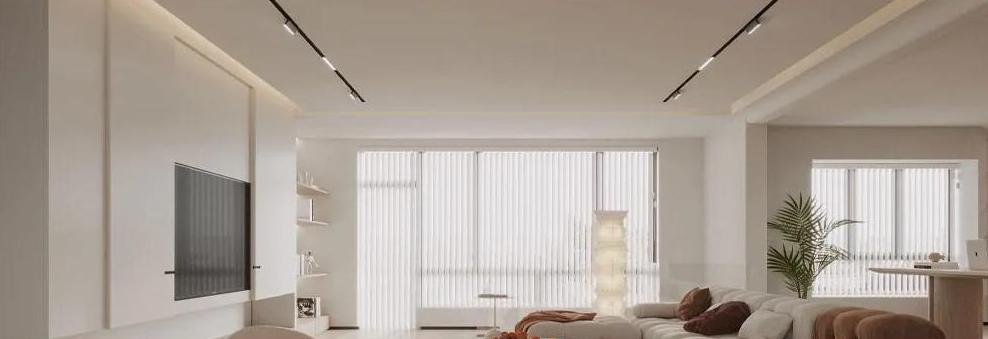
4.2 Dining Room: Amplifier of Food and Emotion
l Core Tasks: Clearly illuminate the color of food, authentically showcasing its flavor; softly enhance diners' faces, creating a warm and pleasant atmosphere.
l Optimal Lighting:
l Low-hanging pendant lights (3000K color temperature). A low-hanging light source (70-80cm from the tabletop) creates a sense of focus, making the dining table the absolute focal point. Key Details:
l Ensure lighting covers the entire tabletop (a round table with a diameter less than 1 meter can be illuminated with one lamp; a long or large table may require two to three lamps arranged in a linear pattern).
l Choose a semi-transparent material (acrylic, fabric, or paper) for the lampshade. Focus the light downward, while also providing some upward diffuse reflection to provide comfortable supplemental lighting for the surrounding area and avoid harsh contrasts like "stage spotlights."
l For tables with a diameter greater than 1.2 meters, the pendant lamp should have a diameter of at least 30 cm to avoid disproportionate lighting and the risk of head-on collisions.
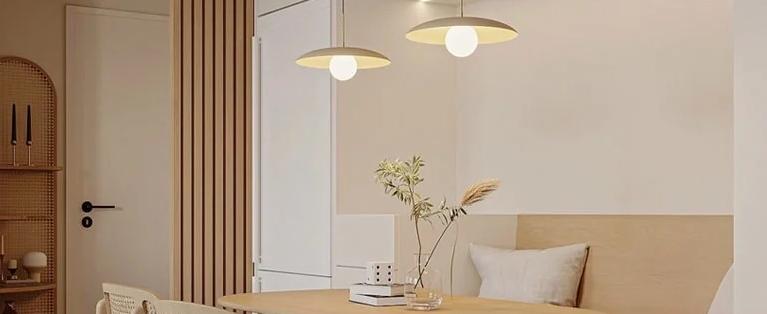
4.3 Kitchen: A Safe and Efficient Workspace
l Core Requirements: Adequate, even, shadow-free workspace lighting ensures safety; authentically reproduces the colors of ingredients to stimulate cooking.
l Basic Lighting: Install recessed downlights or ceiling fixtures (color temperature 4000K-5000K) on the ceiling to provide an overall bright environment.
l Key Supplements - Circular Lighting:
l Under-cabinet lighting (color temperature 3000K-4500K): The optimal solution! Completely eliminate shadows on the worktop. Choose linear lights or small spotlights. Waterproof and oil-resistant are key, and sensor control is convenient and energy-efficient.
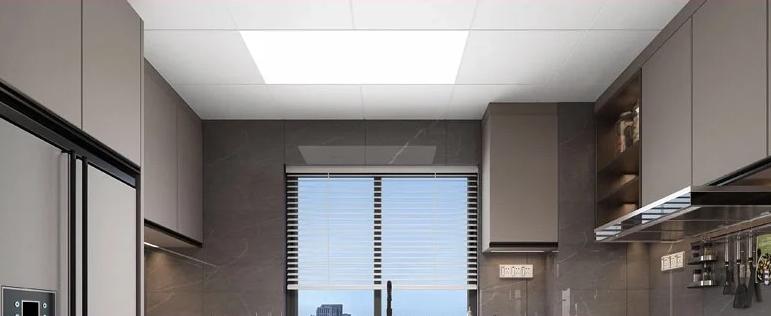
Over the sink: Install fog-proof and waterproof spotlights (color temperature 4000K) to ensure ample light during cleaning.
High color rendering index (Ra>90) lighting can better reproduce the true colors of food.
4.4 Bedroom: A Quiet Haven for Body and Mind
l Core Atmosphere: Relaxation, sleep-inducing, and stress-free.
l Overall Tone: Predominantly warm yellow light (2700K-3000K) promotes melatonin secretion. Large lamps are preferred over small, avoiding small, glaring sources.
l Bedside Lighting (Wheel Light):
l Optimal Lighting:
l Adjustable swing arm wall lamp or small wall lamp. Avoid direct light into the face or eyes (especially when lying down). Ideally, illuminate books or the wall/floor in front, providing soft light through diffuse reflection. Color temperature is optional: 4000K (for clearer reading); brightness is recommended at 500 Lux.
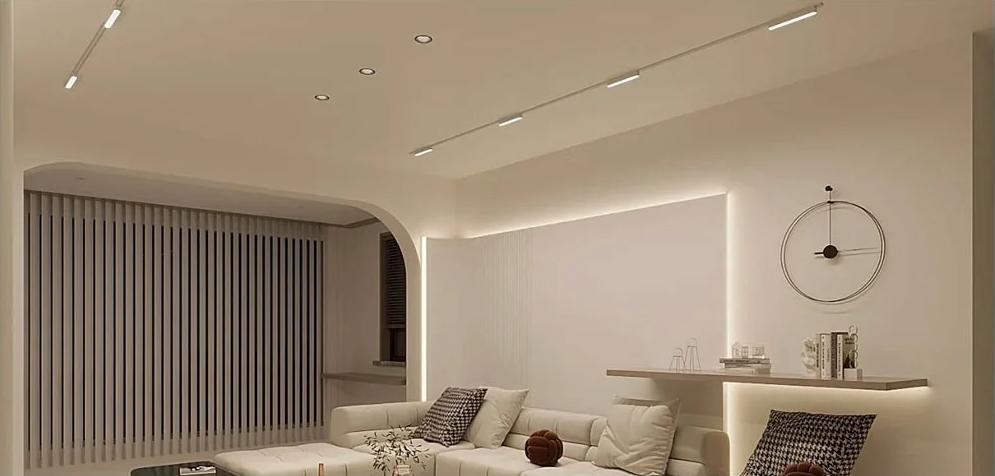
4.5 Wall Sconce Advantages:
l No need to occupy bedside countertops, keeping things neat and safe.
l Nighttime Lighting (Focused Light): A sensor-activated night light (color temperature < 3000K, very low brightness) can be installed on the floor at the foot of the bed or on the path to the bathroom.
l Wardrobe Interior: A sensor-activated LED light strip that illuminates upon door opening, saving energy and electricity.
Study: A Source of Concentration and Inspiration
l Core Requirements: Clear, bright, glare-free, and reduces visual fatigue.
l Ambient Lighting: Uniform, soft, neutral 4000K light (downlights, ceiling lights).
l Desk Task Lighting (Rotary Light): This is paramount!
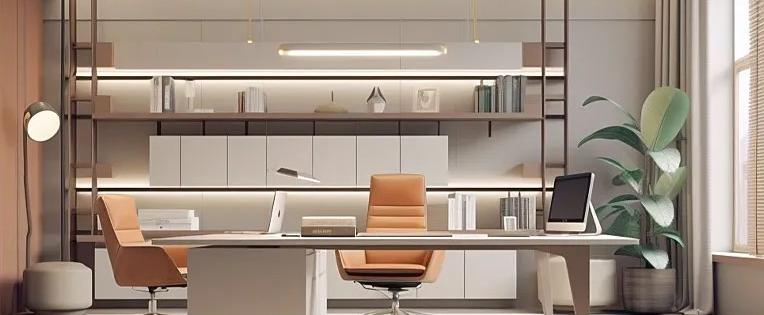
Optimal Lighting:
l Professional reading lamp with dimmable color and anti-glare design (sufficient brightness, approximately 60W LED equivalent). Placement Principles:
l Light source should come from directly in front of the desk or to the left (for right-handers) to avoid hand shadows obscuring the work surface.
l Computer Side Supplement: Place a low-color-temperature (3000K) desk lamp or light strip next to or behind the monitor to balance the cool screen light (5500K-6500K) and reduce visual fatigue.
l Bookcase/Display: Use adjustable-angle spotlights or wall-washers for accent lighting to highlight collections or books.
4.6 Bathroom: A Fusion of Functionality and Cleanliness
l Core: Bright, safe (anti-slip), authentic (for makeup/shaving), and moisture-proof and waterproof.
l Overall Lighting: Use waterproof ceiling lights or anti-fog downlights (color temperature 4000K-4500K) to provide even, basic light. Avoid installing spotlights in the shower area or directly above the toilet, which can cause harsh shadows and uncomfortable glare.
l Mirror Lighting (Wheel Light): Absolutely crucial!
l The best solution: A mirror cabinet with built-in LED lighting or vertical wall lamps (color temperature 4000K-4500K) on either side of the mirror.
l Avoid: Installing lighting only from the top will cast unsightly shadows on the face (eye sockets, chin). Lighting from both sides will evenly illuminate the face.
l Shower area: Waterproof and fog-proof flat panel lights or downlights (color temperature 4000K) are bright enough to see bath products.
l Bathtub area: Consider low-brightness fog-proof wall lamps or small pendant lights (color temperature 3000K-4000K) to create a relaxing bathing atmosphere.
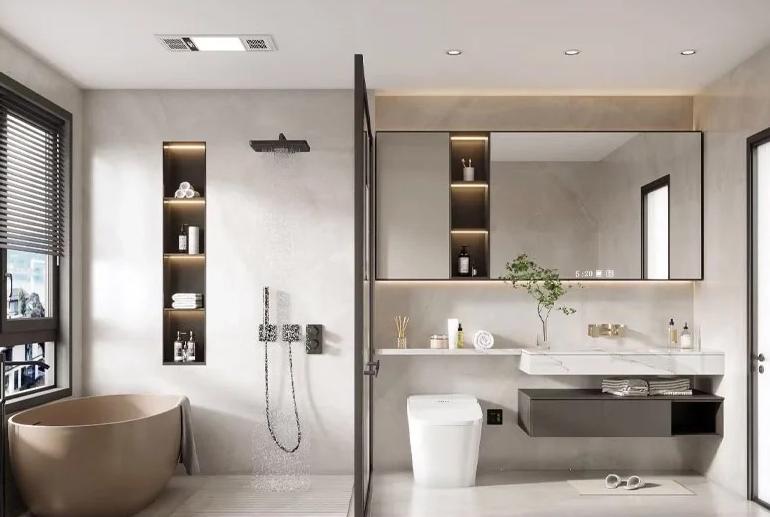
Lighting arrangement is a fusion of scientific precision and artistic perception. Understand and apply the golden triangle principle of "ambient light - circular light - focal light" to precisely control color temperature, brightness, illumination angle, and placement. Choose the optimal lighting combination based on the functional and emotional needs of each space and you'll be able to say goodbye to the dilemma of single, glaring or dim, oppressive lighting.
The value of the best lighting lies not only in its appearance but also in its ability to perfectly blend into your play of light and shadow, its ability to flexibly adapt to changing needs, and its ability to deliver light to the areas most needed in the most comfortable way. When light naturally permeates every corner of your home like flowing water, and when the interweaving of light and shade outlines the contours of life, your home truly becomes a warm container that carries emotions and nourishes the body and mind. To illuminate a space with care is to illuminate life itself with care.



